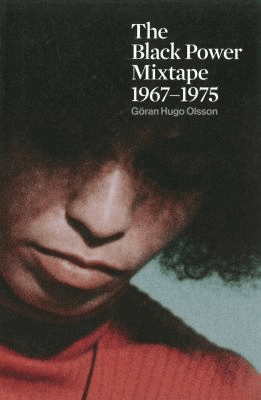It sounds wildly improbable, and yet, it happened. Inspired by Billy Paul, Swedish filmmaker Göran Hugo Olsson set out to make a documentary about soul music. However, stumbling across archival footage of Stokely Carmichael and Angela Davis steered Olsson’s creative energies in a different direction. The result was a 2011 documentary that became the toast of Sundance: The Black Power Mixtape 1967-1975.
Even the best films, however, can only contain so much footage, and Olsson had to leave a lot of quality material on the cutting room floor. Luckily for us, that material has been collected into a companion book of the same title. Reading the print Mixtape is a door that swings both ways: if you’ve already seen the film, you’ll be thrilled to get the story behind the story. If this is your first encounter with Olsson’s project, it will definitely inspire you to watch the documentary.

But how did one of the world’s blondest countries get interested in the American civil rights struggle? In his preface Olsson explains the roots of Sweden’s interest in Black Power, which was tied to Martin Luther King Jr.’s Nobel Prize and the country’s own opposition to to the Vietnam War. Their concerns led to the deployment of many Swedish reporters to America during the late ’60s to mid-’70s. Their outsider take on America’s wars—cultural and otherwise—is the forerunner to Olsson’s own approach: “As an outsider,” he explained, “you could ask stupid or even arrogant-sounding questions and still get great answers. People understand that you do not have the language or the American experience because you are from this remote country close to the North Pole. And so they try to explain, to enlighten you” (11). It’s worth considering that perhaps Olsson got great answers because he asked questions many Americans didn’t.
Mixtape‘s print format mimics, insofar as possible, the structure of the film. Divided into chapters chronologically by year, the text consists of transcripts and stills from the film paired with contemporary cultural commentary from a variety of voices, including Questlove, Sonia Sanchez, Talib Kweli, and Erykah Badu. Olsson also managed to get some of the key historical players, such as Angela Davis and Bobby Seale, to look back on the archival material that concerned them and talk about it. The result really does give the effect of a “greatest hits” mixtape, where each chunk of text references a specific historical person or event (Eldridge Cleaver, the New York 21, Attica) These texts create distinct impressions that are either reinforced or contradicted by the pieces that precede and follow them. Some of the passages are short sound bites, while others are longer and more reflective. All are stark and evocative.
Whether you’re a print person or more of a visual learner, The Black Power Mixtape is a raw, honest experience that would work well in a college classroom setting. It’s also a good pick for readers interested in Black history, documentary buffs looking to be pushed out of their comfort zone, or communities seeking book club or other public programming ideas.
Cue the Mixtape
Click here to reserve the book or the DVDLeigh Anne recommends good books and outwits Google daily. If you hear anybody singing or whistling in the stacks, it’s probably her.
